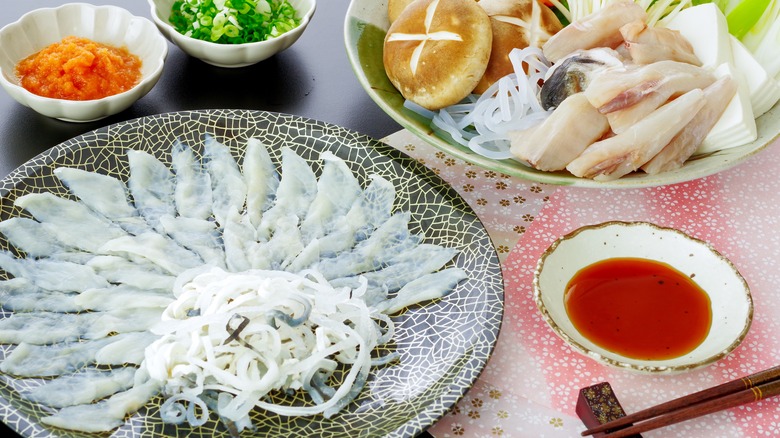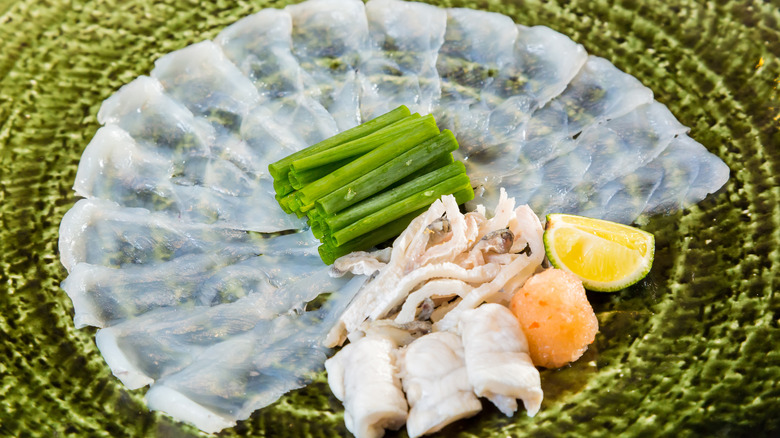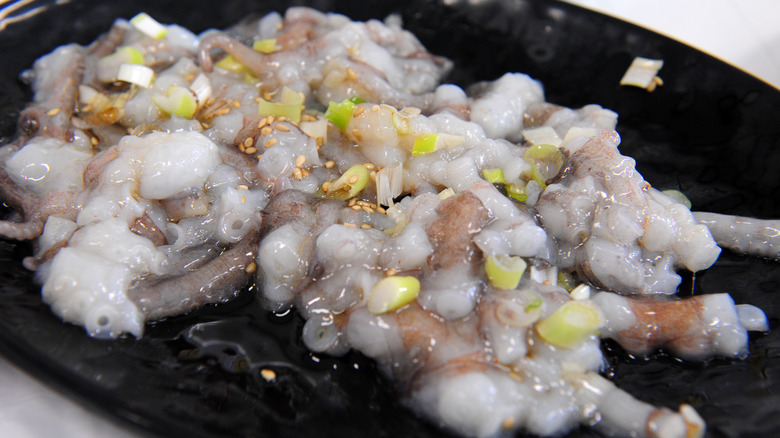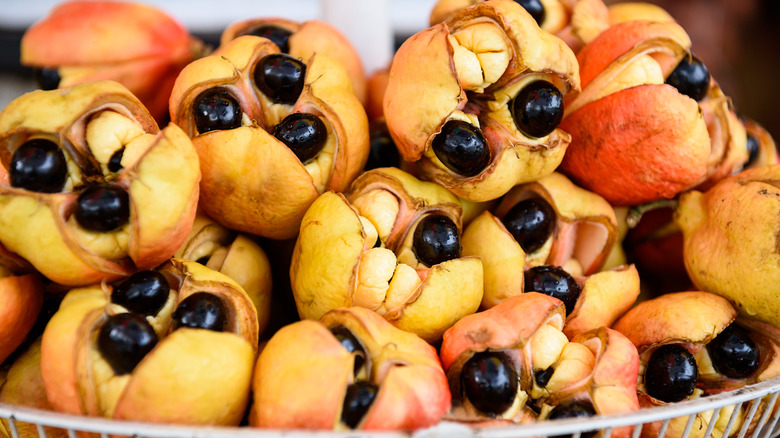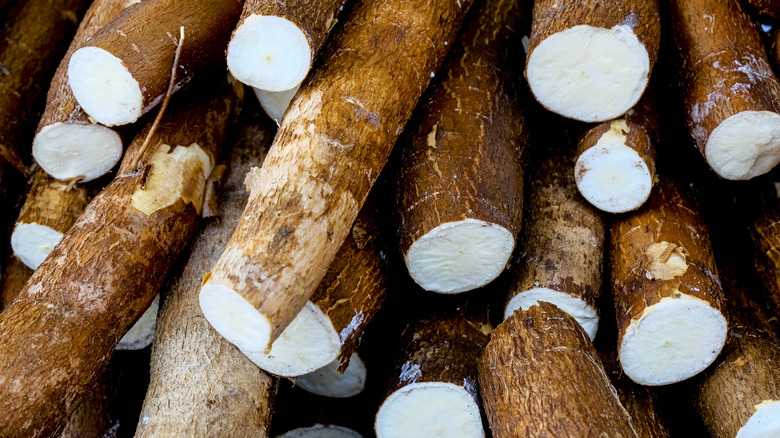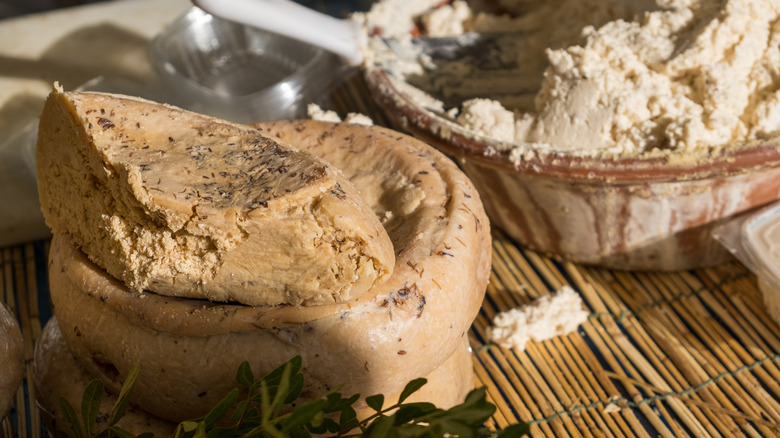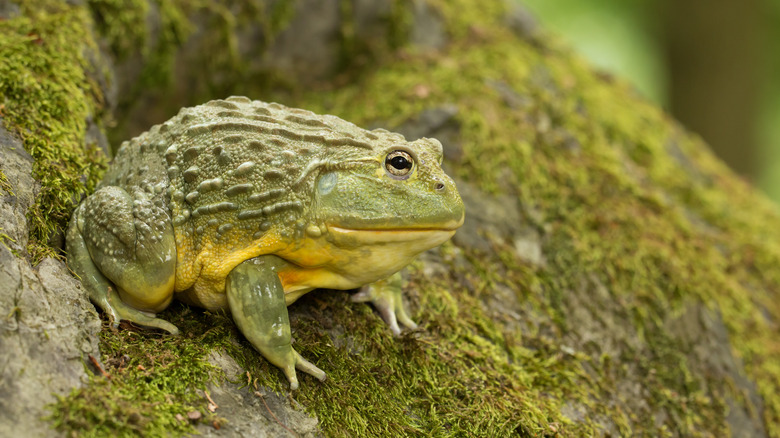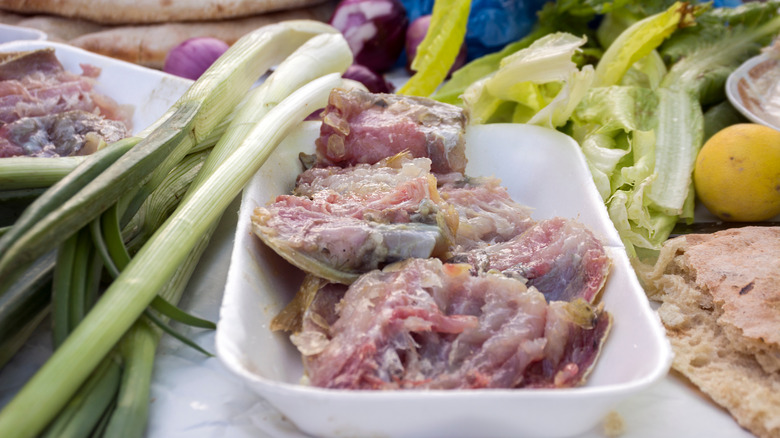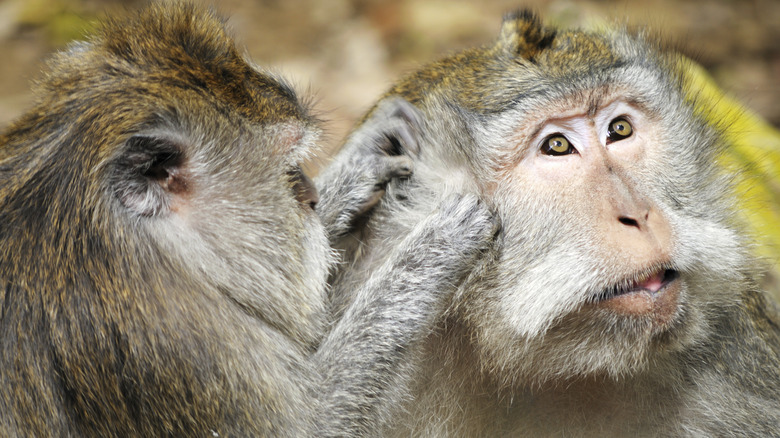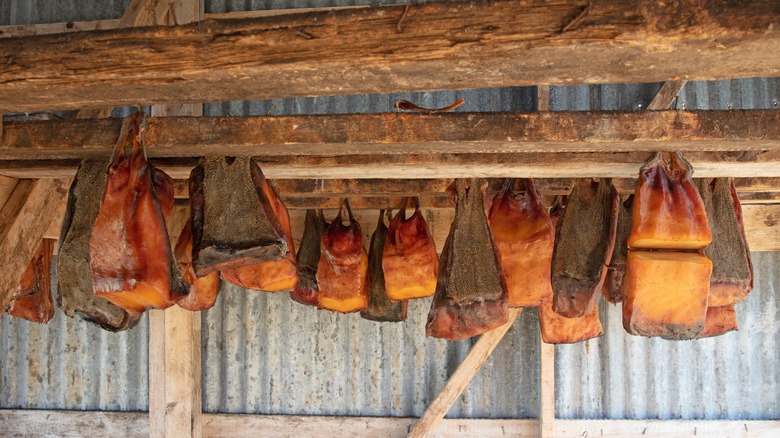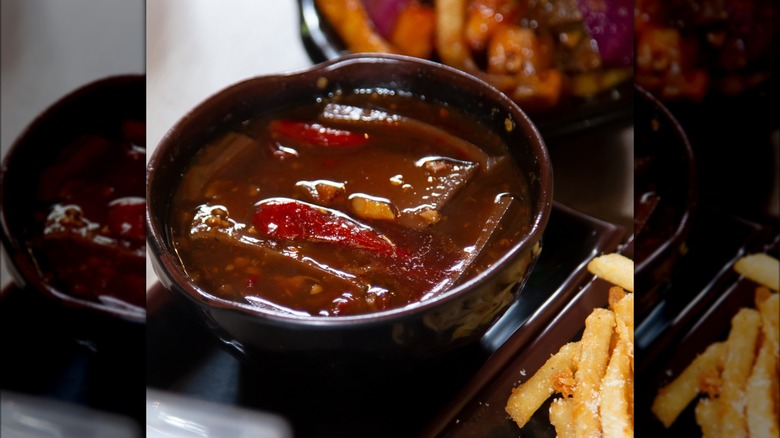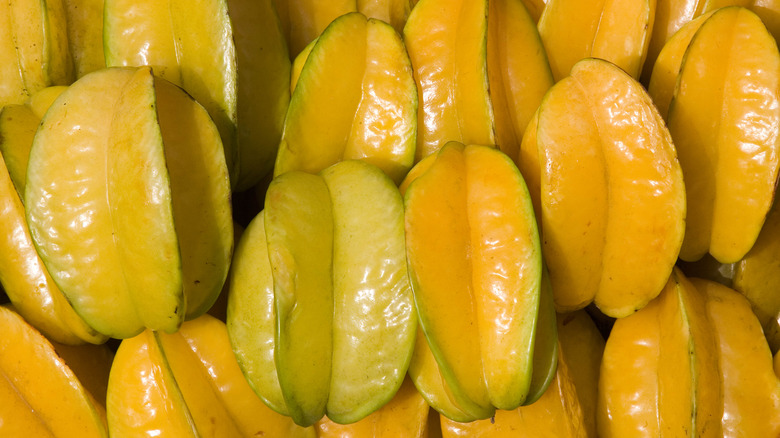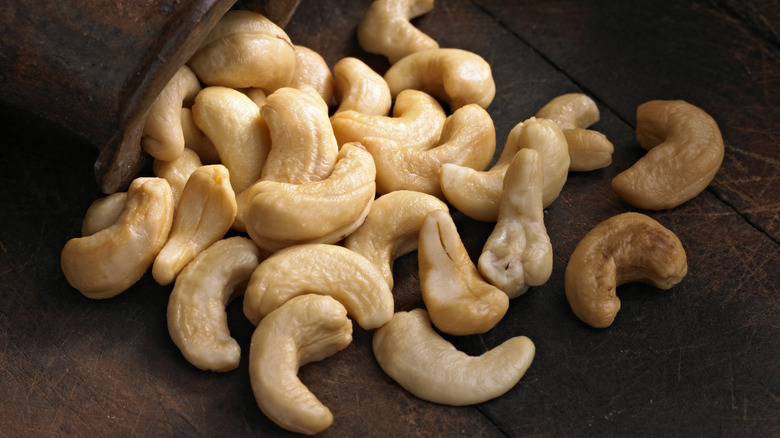Dangerous Foods From Around The Globe That Can Kill You
Eating your way through a country's unique, delicious, and sometimes strange food is one of the best parts of traveling. From international food festivals to street food tours, there are many ways to explore a place's culinary culture. Many travelers explore the world with a menu in their hands, always on the hunt for all the most delicious or exotic dishes they can find.
While trying new foods from different cultures is a travel must, some unconventional dishes aren't just a new experience for your taste buds — they can be deadly. Certain dishes can be poisonous, give you a deadly disease, or even choke you to death if they are improperly prepared. It happens frequently as well — food is one of the most common ways to get severely ill, with around 3,000 people per year dying from diseases they acquired after munching down on contaminated grub.
These dishes can be safe to eat when made under the proper conditions, but they are still riskier than your average meal on vacation. Diner beware. These are some dangerous foods from around the world that can kill you.
Fugu
Fugu, also known as the puffer fish, is an alien-looking delicacy served sashimi-style that is considered a gourmet dish in Japan. Eating raw fish in Japan isn't out of the norm, but this is one of the few seafood dishes that can put you in an early grave. Pufferfish have a substance called tetrodotoxin in their body that works as a defense mechanism to make them taste gross to other fish. This stuff is extremely poisonous unless it is consumed under very particular conditions, and by "extremely poisonous," we mean the toxins in fugu can be up to 1,200 times stronger than a dose of potassium cyanide.
According to Japanese food blog Kobe Jones, chefs must be at least 20 years old and undergo up to six years of special training to learn how to properly prepare the fish by removing the poisonous bits. Restaurants are also required to be certified by the Japanese government before adding fugu to their menu. So, it is mostly safe to eat when you're in Japan specifically. However, even with all the proper precautions in place, approximately 50 people every year get pufferfish poisoning, according to the Japanese Ministry of Health, Labor, and Welfare.
Sannakji
Sannakji is a popular dish in several Asian countries, such as Japan and South Korea. You've probably tried sushi at some point in your life, but this dish goes a step beyond dining on uncooked fish. The octopus here is still alive, served up with a little seasoning on a plate. The creature is legitimately still wriggling its tentacles as patrons chew it to a brutal death.
This dining experience can be just as dangerous for the human eating it as it is for the octopus being eaten. A meal of sannakji can end up with two fatalities if it isn't chewed thoroughly, and it is also an extreme choking hazard. One nutritionist told Business Insider that the octopus' tentacles can get stuck on the edges of the throat and make breathing impossible. "It's not recommended," she urged, "There's a choking hazard predominantly from the suckers getting stuck to the inside of the throat, leading to the octopus causing an obstruction."
Ackee
As the name suggests, the Ackee fruit is a key part of ackee and saltfish, Jamaica's national dish. This dish is a stir-fry or scramble made with products local to the island. Usually, tourists would be keen to try a country's staple plate, but most are a little more weary of this one. While the colorful fruit with its fish-eye seeds looks fairly harmless, ackee can easily poison diners and quickly ruin a vacation.
If you eat an unripe ackee fruit, you can succumb to a brutal metabolic illness known as the Jamaican vomiting sickness, which is just as bad as it sounds. In minor cases, it causes low blood sugar, confusion, and extreme bouts of vomiting. In extreme cases, people poisoned by ackee fruit have experienced a range of symptoms like seizures and hypothermia, with many ending up in a coma or even dying.
That being said, it is safe to try the national dish when visiting Jamaica as long as it is cooked fully from a reputable spot. You may want to skip trying to prepare it by yourself, though. Leave this to the professionals.
Cassava
Unlike many other delicacies on this list, cassava is commonly consumed worldwide. As per Scientific American, the plant feeds around 800 million people globally and is a major dietary staple in many parts of Africa. Cassava is a root vegetable that contains some really healthy stuff, like vitamin C, carbohydrates, vitamin B6, potassium, magnesium, and protein. The great thing about it is that the plant can be grown in all different types of environments, making it ideal for regions with poor crop conditions.
While there are a ton of benefits to the versatile cassava root, the problem is that it also contains dangerous levels of something else — cyanide. This deadly compound occurs naturally in raw cassava, and eating it uncooked has led to many cases of cyanide poisoning over the years. There was even an outbreak of it in Uganda as recently as 2017.
Symptoms of cyanide poisoning include headaches, dizziness, rapid pulse, convulsions, and disorientation. As anyone who has ever watched a spy movie knows, cyanide can easily kill a human being if they ingest enough of it. As long as you aren't munching down on the root raw, you will probably be fine like the millions of people relying on cassava for its nutritional value.
Casu Marzu
Eating cheese in Italy is another travel must, but you may want to be careful if you plan on consuming casu marzu. This rare cheese is specially made by shepherds on the beautiful island of Sardinia, yet the dairy product is far less alluring than the setting. Why? Well, that'll be because casu marzu is a cheese made famous for being filled with maggots. The name directly translates to "rotting cheese."
The specialty is created by flies laying their eggs inside the cracks of pecorino cheese. Then, the maggots hatch out of the eggs and digest the cheese as they move through it, producing an even softer cheese, which becomes the official casu marzu cheese. Producing this stuff is quite the journey.
Besides the ick factor, casu marzu can potentially be very harmful to your health, and the Guinness World Records Book even called it the most dangerous cheese in the world in 2009. It's even banned for commercial sale and is illegal in many countries, including the United States. Many experts believe that maggots in the cheese could survive a person's stomach acid and end up boring holes into the eater's intestines, but there hasn't been a documented case yet.
African Bullfrog
Eating frog legs isn't that strange in the U.S. It's even considered a beloved comfort food in many southern states, like Louisiana, Alabama, and Florida. However, the African bullfrog isn't your everyday edible amphibian. It's a highly dangerous delicacy that can make you very sick. Despite the potential risks, the African bullfrog is still one of the most sought-after dishes you can find in Nambia, with many willing to risk death in search of deliciousness.
Locals from this country don't just stop at the legs either; they put the entire body of the bullfrog to use, which unfortunately also exposes the diner to even more toxins. These types of frogs can grow to be the same size as an average cat, meaning that there is a lot of meat inside and also a great deal of poison. Even though African bullfrogs are considered a Nambian treat, eating them can have devastating health implications. The toxins inside the frog's organs and coating its skin have been known to trigger kidney failure and even eventually lead to death.
Fesikh
In Egypt, the spring season is welcomed with a festival called Shem el-Nessim, a celebration not unlike Easter in the United States. The occasion is often celebrated by eating a unique dish known as fesikh, which Americans probably won't be putting on their holiday tables any time soon. For the curious, "fesikh" means fermented or rotten fish.
Fesikh is prepared by drying a gray mullet fish in the sun covered in salt and leaves for as long as a year. It is a key part of the Shem el-Nessim celebration and a time-honored tradition in Egypt. The only drawback is that fish prepared in this way can be a major risk for botulism, an illness that attacks the human body's nervous system. It is commonly acquired by eating toxins in canned or fermented foods that were not properly prepared.
The fermented fish dish is so dangerous that the Egyptian Health Ministry issues a warning before the holiday each year that people should not eat fesikh. There are many botulism poisonings in Egypt because of this dish, and deaths are not uncommon. It's not just contained to Egypt either — in 2018, two women suffered from botulism after eating fesikh in New Jersey.
Monkey Brains
Yes, monkey brains. Eating monkey brains might seem crazy to an American tourist, but it's actually a traditional specialty in many of the best places to visit in Southeast Asia and China. Many people believe that scarfing down macaque brains can improve their sex life or impart untold wisdom. Some are so convinced that it's led to the overhunting of these monkeys in places like Indonesia, as reported in Mongabay. Unfortunately, these monkeys are treated very unethically, and most people from the region consider the dish cruel because it's sometimes served while the animal is still alive with its skull as the bowl, like something out of a horror movie.
While it's unclear whether it really cures impotence or has any other magical properties, eating raw monkey brains can definitely cause something called Creutzfeldt-Jakob disease. This affliction is similar to Bovine spongiform encephalopathy (BSE) disease, and the symptoms are terrifying. The diner starts losing their vision and slowly falls into a dementia-like state before eventually succumbing to death.
Hákarl
Americans are familiar with some fermented foods, like kimchi and probiotic yogurt, but not many have encountered pickled sharks. Fermented shark meat is a popular Icelandic snack called hákarl, and it's one of the many things in Iceland that can kill you. The dish has become so emblematic of the country that it is even one of the country's national foods. The fermenting process involves slicing up the shark and burying the meat for months at a time before it is eventually ready to be hung to dry in traditional structures.
If everything is done correctly, this method should make the hákarl completely safe to eat. However, things can go wrong, and that can be a big problem because consuming raw shark meat is incredibly dangerous for landlubbers. Shark bodies have been found to carry high levels of toxic substances like mercury and trimethylamine oxide that can make humans sick if they eat improperly prepared meat. Since this dish has become such a major staple of Icelandic culture, the country's chefs have a pretty good handle on how to make hákarl and you will probably be safe to eat it there.
Kiviaq
Many food specialties from Greenland can be strange for international visitors. The local palette developed from what was available in the Arctic climate, and it's common for people to eat things like whale blubber and reindeer here, but kiviaq is one of the few dishes that can potentially kill you. This traditional Inuit dish has such an intense preparation method that it's bordering on disturbing.
The first step to making kiviaq is to catch a seal and hollow out its body so that only the skin remains. Next, the carcass is stuffed with around 300 to 500 little auks, a local bird. Finally, the whole thing is stitched up and buried under rocks to ferment for up to 18 months. By the end of this process, the entire bird is eaten raw — bones and all.
While it sounds like the playbook of a deranged serial killer, kiviaq is a beloved dish of the Inuit people from the region, and it serves the very important purpose of feeding everyone during the long, harsh winters when food isn't readily available. However, since it is prepared over such a long time, there is a big chance of food poisoning from eating kiviaq. As recently as 2013, someone passed away after dining on improperly prepared kiviaq.
Blood Soup
This Southeast Asian dish enjoyed in countries like Vietnam and Thailand has arguably the most terrifying title of any appetizer on the planet. Blood soup is exactly what it says on the tin: fresh animal blood that has been lightly seasoned, mixed with lemongrass to purify it, and topped with crispy noodles, pork skin, or other ingredients. On the one hand, many people are shocked by how tasty the bloody concoction actually is. On the other, there is a long list of diseases that can be contracted from consuming raw animal blood in this way.
The primary concern is that it's possible to catch Streptococcus suis from slurping down blood soup. Streptococcus suis is a pathogen that causes patients to experience hearing loss and symptoms similar to meningitis, such as a headache and fever. In severe cases, people can even suddenly die from it. Just a few years ago, 14 people died from this disease in Vietnam, mostly from consuming uncooked pig's blood, as reported in Tuổi Trẻ News.
Star fruit
Tropical star fruit is another potentially toxic food that's not entirely bad. Incorporating star fruit into your diet has several health benefits. For example, it offers anti-inflammatory properties, is an antioxidant, and can help prevent certain things like heart disease. However, it can be a deadly snack for people who have kidney disease.
Star fruit is packed with neurotoxins, which wouldn't be a problem for people with functioning kidneys to digest and pass. Unfortunately, if you have kidney problems, this dangerous toxin never gets expelled. It just sits around in your body and can create some significant issues.
An individual suffering from star fruit poisoning might start by being a little disoriented or even getting hiccups. These symptoms can quickly devolve into more serious things, like a seizure or death. Remember, it is always important to consider how a new food might impact a pre-existing condition before eating it.
Raw Cashew
Most consider cashews harmless morsels that are a perfect snack between meals, but many folks don't realize that the nut starts off extremely toxic. According to Healthline, raw cashews contain a toxin called urushiol that can cause a rash reaction similar to poison ivy. The majority of this poisonous component is found in the space between the cashew shell and the nut itself. Once the nuts are roasted at high temperatures, the toxins are eliminated, and the cashews are safe to eat.
However, eating these nuts before they go through this cleaning process can have horrifying results. One study conducted on rats and available on the National Library of Medicine found that cashew nutshell extract caused various symptoms ranging from scratching and sensitivity to tremors, lethargy, and death. This is why cashews are never sold to customers in the shell. While the cashews in the nuts section at your local grocery store are safe to consume, it might make you think twice the next time you pop one into your mouth.
